Wondering what you can learn about Space Exploration from the Chris Hadfield MasterClass, and whether it’s worth paying for?
Then you’re in the right place.
I’ve completed the class in its entirety (and it’s currently the longest one on the MasterClass platform).
So in this Chris Hadfield MasterClass review I’ll be sharing my experience and covering everything you need to know to help you decide if the Chris Hadfield MasterClass is a good match for you.
I’ll start with the highlights in case you’re short on time:
.
Quick summary
In this class you’ll learn:
- All about space and exploration
- How astronauts approach problem solving
- How rockets and orbital mechanics work
- What it takes for humans to survive in space
- All about commanding the ISS
- Chris Hadfield’s perspective on space exploration
- Spaceship design
- The future of space travel
- The technical and societal challenges of taking humans to Mars
Pros
- Teaching from a world renowned astronaut and advocate for science
- Learning supported with strong examples, props and resources
- Well structured lessons that flow logically
- It’s exciting and makes you think!
Cons
- More theoretical than practical (as you might expect)
- Some lessons would benefit from more footage to break up the presentation
Course length: 29 lessons of around 15-20 minutes in length totalling 7 hours and 47 minutes.
Best for: Anyone wanting a comprehensive overview of space exploration from one of the world’s most gifted scientific communicators. Also, anyone who’s intellectually curious or looking for life lessons on problem solving, leadership and being your best self.
Overall: Personally I loved this class. Hadfield distils the immense wisdom gained from his two decades as an astronaut and 4,000 hours in space to change how you think about space, yourself and the future.
With an All-Access pass you can enjoy this class and over 100 others (including from Neil deGrasse Tyson). Plus as MasterClass has a refund policy, the risk of you losing out if you don’t enjoy it is minimal!
And now for my more detailed review, here’s what I’ll be covering:
- A look inside the Chris Hadfield MasterClass
- Pros and cons of the course
- Is the content unique?
- Is there anything better?
- Verdict: Is the Chris Hadfield MasterClass worth it?
First the basics:
About Chris Hadfield
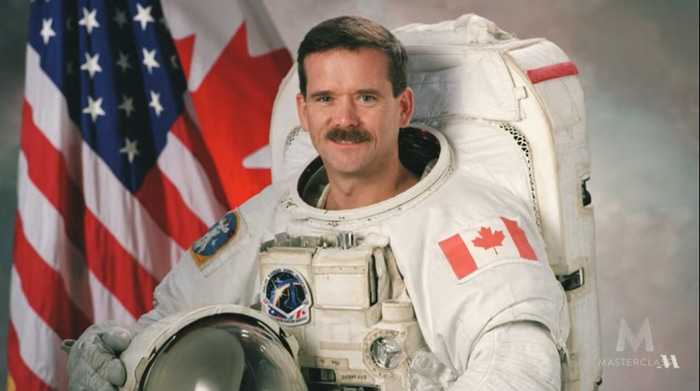
“What I learned from 21 years as an astronaut is that the more you know, the less you fear.”
Chris Hadfield is a retired astronaut, former commander of the International Space Station (ISS), engineer, advocate for science, one time fighter pilot and … singer!
After 25 years as an Air Command fighter pilot, Hadfield trained as an astronaut. He has flown three space missions, was the first Canadian to walk in space and spent six months in orbit commanding the ISS.
Whilst on the ISS he shared his experience of life on board on social media. Even playing his guitar and performing his own version of Space Oddity (which to date has 49m views on YouTube).
His ability to make science fascinating, fun and accessible has garnered him a massive social media following and his ‘Reddit ask me anything thread’ was one of the most popular ever to appear on the platform.
After recording almost 4,000 hours in space, he went on to work for NASA as it’s chief of ISS operations and became chief CAPCOM commander (the space crew’s voice on the ground).
And if you haven’t already watched it, I recommend you watch the Chris Hadfield MasterClass trailer:
About Masterclass
MasterClass is one of the most comprehensive and popular online learning platforms out there.
It differs from other platforms in two respects: Its teachers have achieved global recognition due to their talents and achievements and it has outstanding cinematic production values.
Chris Hadfield’s MasterClass sits beside classes from over 100 other world renowned experts such as Margaret Atwood, Neil deGrasse Tyson, Gordon Ramsay and Hans Zimmer.
Inside the Chris Hadfield MasterClass
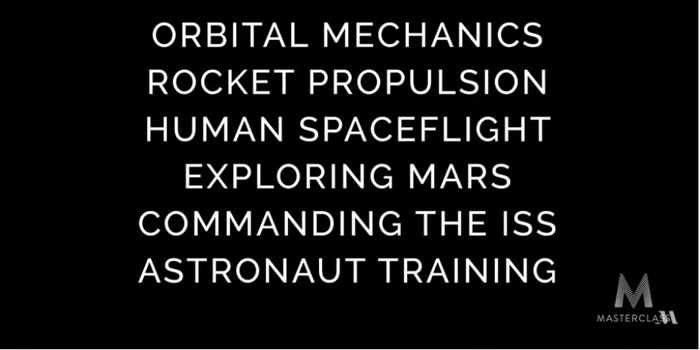
Chris Hadfield’s MasterClass comes in at 7 hours and 47 minutes of viewing time. It consists of:
- 29 lessons which are mostly between 15-20 minutes long
- Access to an online community
- A 97 page workbook summarising Hadfield’s personal experiences of being an astronaut – particularly with regard to leadership of the International Space Station (ISS), the science, mechanics and design behind space travel, the experiments being performed on the ISS, suggestions for further reading, and much, much more.
You’ll be getting a number of documentary style videos all of which contain a wide range of resources (dramatic film clips and stills, scale models, animations, graphics, annotations, etc).
For the purposes of this review, I’ve split the Chris Hadfield MasterClass into 7 sections to help you get a better sense of it:
- Meet your instructor
- Rockets
- Spaceships
- The International Space Station (ISS)
- Spacewalking
- Mars
- Closing words and bonus chapter
Section 1/7: Meet your instructor
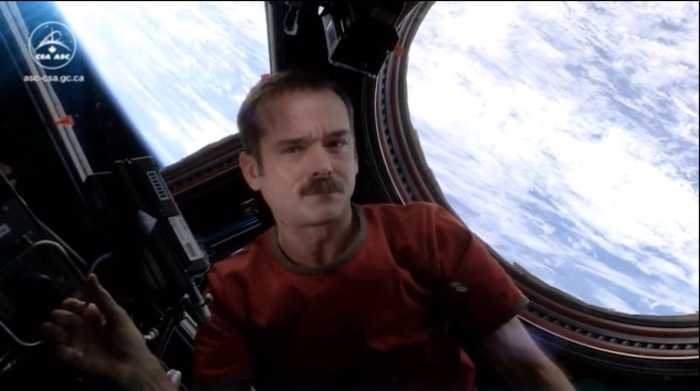
“The reason I wanted to do this MasterClass, is to share the hidden depths of purpose that are behind space exploration.”
Chris Hadfield’s MasterClass gets off to a mesmerizing start with a stunning array of images and soundbites from his career and time in space.
He then sets out who this class is for. And he’s keen to stress that it’s for anyone who is keen on exploration – not just of space, but of new ways of looking at things.
Beyond that, it’s for anyone who’s interested in exploring ways of turning themselves into something different than they used to be.
Astronaut training
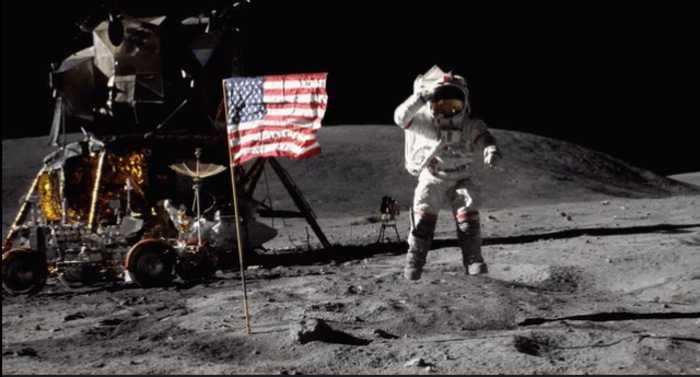
“Astronauts don’t like adrenaline in their veins.”
Hadfield starts by advising you to forget the Hollywood portrayal of voyagers in space – the derring do, thrill seeking, macho types who love the adrenaline rush.
This is the very opposite of what an astronaut needs to be like!
He sets out what it takes to become an astronaut. You’ll learn that it’s necessary to:
- Become an expert on everything, since there’s usually no one in space to ask (and no time to ask the question!)
- Respond to emergencies in a single breath
- Understand, in detail, how a rocket works
- Make informed observations of the earth
- Master enough medical knowledge to fix yourself, and others
- Survive – both in space and wherever you might land in an emergency (whether it be artic, desert, jungle or shark infested waters)
- Be a team player – and a team leader
- Practice all the above like crazy, and
- Never take anything for granted
Hadfield rounds this lesson off by speculating how and why the skill sets and qualities of astronauts are likely to evolve in the future.
Section 2/7: Rockets
How rockets work
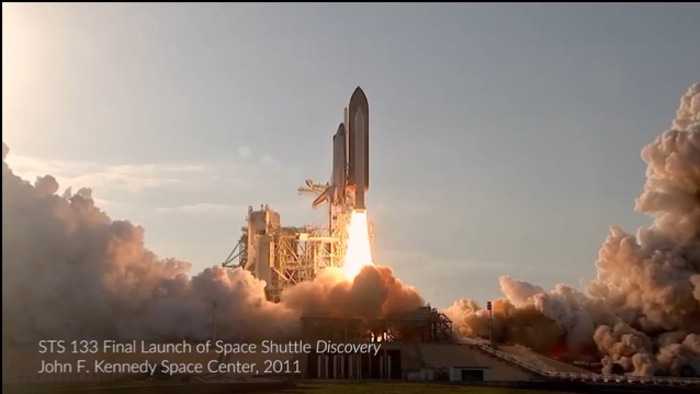
“So how does a rocket work anyway? How is it that we get off the surface of the world?”
Well, this lesson really is rocket science.
But no need to fear if you're not technical. I’m not. Using models, analogies, plain language and all manner of good teaching devices, Hadfield teaches you about the:
- Basic anatomy of a rocket
- Physics behind launching one into the atmosphere
- And the evolution of rocket design from mission to mission
I was really impressed by the way Hadfield made science accessible. This lesson demonstrated both his excellent teaching abilities and his commitment to promoting an appreciation for science.
And the visuals and music continue to be stunning.
What if feels like to launch
“It’s an incredible morning to wake up, when you know that this is the day that you’re leaving earth.”
Hadfield describes what these days are like – and is keen to emphasize they’re absolutely not taken lightly.
In this lesson you’ll hear Hadfield describe:
- How astronauts prepare for space flight – literally down to their underwear
- The enchantment Hadfield fields as he emerges from from quarantine to see his spaceship – lit up and waiting for him
- The emotions and thoughts he experiences as watches the clock tick down
- How his window of focus narrows till nothing exists but the moment he’s in
- The enormity of the roaring, pulsing and pummelling as the engines erupt and the ship begins to leave earth
- The peace of weightlessness
For me, this lesson was a real adrenaline rush and a massive high point in the course.
Hadfield is a gifted storyteller and you really feel that you’re strapped in alongside him on this journey.
When he says, “Every second going by is a new window of what you’re going to do next if something fails” I could almost feel myself beginning to panic.
Atmospheric Drag, Orbital mechanics & Fuels and propulsion
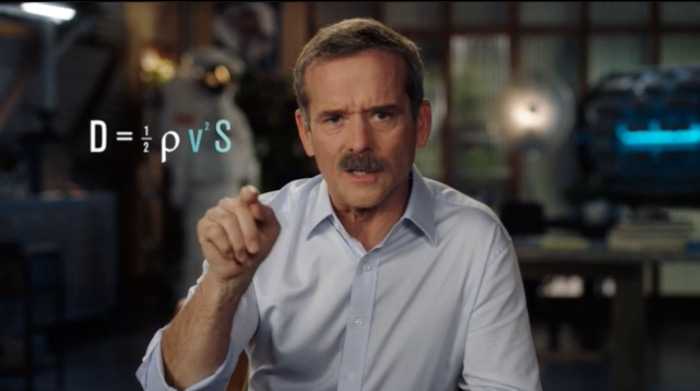
Here we have three very theoretical lessons to help you understand how:
- Rockets shoulder their way through the drag of the atmosphere
- Cape Canaveral and Baikonur in Kazakhstan were selected as launch sites
- Orbital mechanics govern spaceflight and navigation
- Velocity and lack of drag make you weightless in space
- Decisions are made about what types of rocket fuel are used
I was rather worried this would all go over my head.
But by:
- Carefully breaking down equations
- Using familiar situations as examples
- Cleverly combining technical terms with simple descriptive language
- Deploying analogies
- Drawing simple diagrams
Hadfield made the complex physics of space travel accessible.

And MasterClass animated graphics help to drive understanding home.
However, I have to say this is a lot of theory to take in in a single go. I grasped everything, but some things only briefly and not enough to explain them to someone else!
Though, of course, the beauty of MasterClass is you can take lessons at your own pace and revisit them whenever you want.
But, whilst these three lessons were enlightening, they were nowhere near as much fun as earlier sections of the course.
They end with Hadfield discussing the trade offs in rocket design, especially in terms of the fuel used.
This is a great segue into the next lesson, which shows what happens when the balance of those trade offs is even slightly wrong.
The Price of Exploration
“By definition, rockets are dangerous. The real question is can you make it safe enough, and have you made your trade offs good enough that you think you can trust it to launch?”
What Hadfield helps you understand here are the trade offs in design that killed two shuttle crews.
This lesson made a sobering contrast to the one ‘How does it feel to launch’?
He describes how he coped with the agonizing loss of a good friend in the Columbia Space Shuttle mission of 2003.
And pays a very moving tribute to the Challenger crew, sharing their stories and reminding us that the fact that all of those people stopped right there does not decrease the significance of what they did and what the pursuit of the nearly impossible can sometimes lead to.
He moves on to discuss the nature of risk and how to:
- Turn fear into motivation
- Safely defeat the risk, and
- beat the danger and end up in a new place
And he invites you to think about the risks you’re willing to choose to take to change who you are.
This was a very thought provoking lesson. I thought it was going to be about $$$s, it’s actually about what it means to be fully human.
Section 3/7: Spaceships
Capsule design & Shuttles and beyond
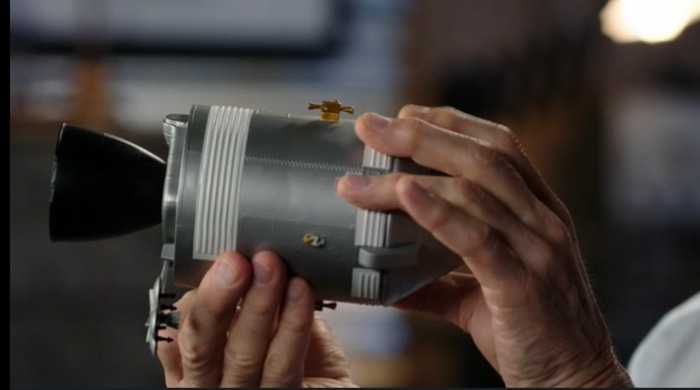
In these two chapters, using detailed models, stills and video footage, Hadfield breaks down the designs of the
- Apollo
- Gemini
- Lunar Lander,
- Soyuz space capsules, and
- Space Shuttle
To teach us how they each aimed to reliably provide their crews with the air, sustenance and shelter they needed to survive.
You’ll learn:
- The strengths and weakness of each design
- How nothing behaves in space as it does on earth – and how this creates a whole new world of problems
- The ways in which design has evolved and improved
- And where it’s headed in the future – including the addition of a holodeck!
And you’ll hear how it feels to re-enter the atmosphere through thousands of degrees of heat with your blood weighing 8x its normal weight.
What, in fact, it might be like to ride an ingot into a blast furnace.
Hadfield has a way with words and you get a real taste of what he’s experienced here. I appreciated the way these exciting, thought provoking chapters break up the more theoretical ones.
It’s a roller coaster of a ride!
And it makes you think.
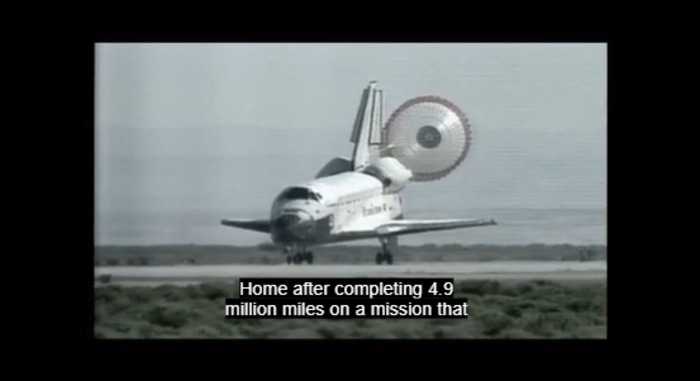
Navigation systems and human variables & Navigating to the ISS
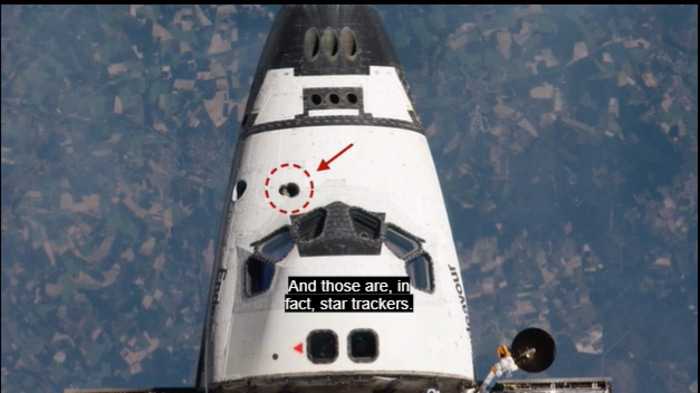
“You’re going blisteringly fast—five miles a second. You’re crossing continents in minutes. The world is turning underneath you. Where are you? Exactly?”
In these two lessons you’ll learn how spaceships (and astronauts when computers fail) navigate various spaceships:
- Visually using the stars, and where they are in relation to the earth below them
- Mathematically using drag and GPS data from various instruments
- And by negotiating an elephant ballet (which is how Hadfield describes getting a spaceship to, and docking with, the ISS)
So that engines can be accurately fired to take the ship precisely where it needs to be. Which is especially important when you think about how incredibly fast it’s going and the devastating consequences of a wrong move!
Section 4/7: The International Space Station (ISS)
Conception, Design and construction, Life support systems & Experiments
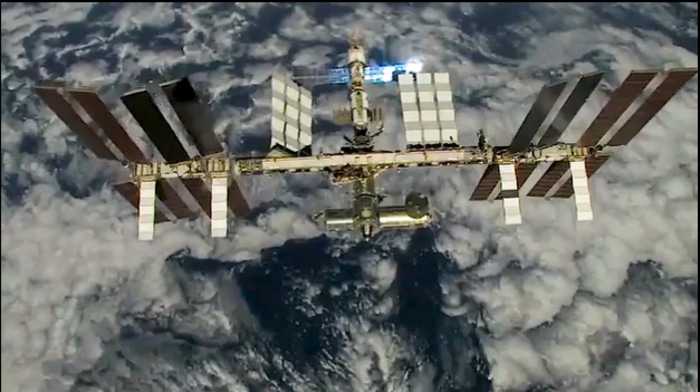
“Countries that here on the surface are always having lots of international problems … have found that this idea of shared exploration, of working together to do something very complex at the edge of our capability, has been a good transition to go through.”
Hadfield describes space stations as “purpose-built laboratories orbiting the world.”
In this suite of lessons you’ll learn about:
- What you can achieve on a space station that can’t be achieved on earth – and why
- The incremental evolution of design from Salyut, through Skylab to Mia
- How countries transitioned from competition to co-operation, resulting in the ISS
- Ways in which the international modular construction influenced decisions
- Methods used to assemble the ISS in space
- The systems that support life on the ISS – including how astronauts know that every sip of coffee is another astronaut’s urine!
- How the ISS is used as completely as it can be to learn about things that can’t be tested anywhere else
- Some of the experiments running on the ISS
Once again, Hadfield effortlessly deploys so many great teaching devices to make content that could be bewildering not just understandable, but fun and relevant.
And I liked that Hadfield placed as much emphasis on International as he did Space Station. I hadn’t really appreciated the potential of exploration for promoting cooperation before.
Leadership and Training and Learning
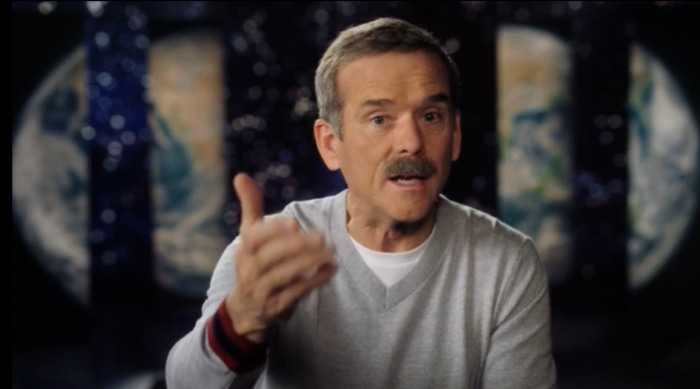
“Commanding the world’s spaceship was a huge privilege. It’s a huge responsibility. I’m here talking to you right now about it because I think the experience is rare enough and interesting enough and deep enough that it has value to other people’s thinking.”
Hadfield passionately believes you should be aware of what’s going on, right at the edge of experience. What it means not just to humanity, but to you as an individual.
What does it take to reach and fulfill such a rare and challenging leadership position? What type of person do you need to be to do the things you’re dreaming of?
Well, in these two lessons, you get to find out.
Comms: Mission control evolution and operations
“The first word spoken from the moon was, in fact, not ‘Tranquility Base’ or ‘one small step’. It was ‘Houston’.”
Hadfield introduces you to the teams of experts on the ground and their critical functions.
You’ll learn about:
- How launch control evolved into mission control as spaceflight capabilities expanded
- The geopolitical differences between the early Russian and American Mission Control centres
- The constant intertwined flow of information within and between International mission control centres
- The pivotal role of the ground based Capsule Communicator (CAPCOM) in selecting and summarising key information for the the crew
- Hadfield’s experience of being CAPCOM over 25 consecutive Shuttle missions
Hadfield really gets across the challenging and inspiring work done by teams on the ground.
He advocates that every astronaut works in Mission Control as much as possible before flying – to get a full sense of the amount of full on support it takes to successfully enable a flight in space.
Section 5/7: Spacewalking
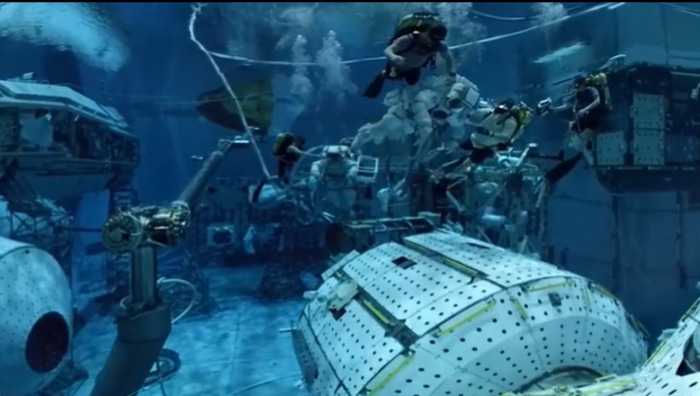
Spacesuits, Spacewalks, Training & Space and perspectives
“The most magnificent experience of my life.”
They don’t happen very often, but when they do, spacewalks are physically demanding and extraordinarily dangerous.
In these two lessons Hadfield takes you through how spacesuits are designed to:
- Deliver a pressurized environment and total life support system
- Shield their wearer from radiation and extreme temperatures between 120°f (sunside) to -100°f (shadeside)
- Provide protection from being blasted by tiny space particles travelling at 10km per second
- Enable full audio visual communications between ship, mission control and walker
- And basically keep astronauts alive in incredibly hostile conditions
He also shares, with his usual narrative genius, the physical and mental challenges of walking in space.
Not your typical day at the office. Especially when you find yourself walking through the Southern Lights:
“This is where our capability has taken us…. This is the combination between science and art, to be able to surf on the aurora. Highlight for me.”
In the following two lessons you’ll learn:
- How astronauts train underwater for spacewalks
- About the underwater ‘space’ station built for that purpose
- Techniques for making the underwater simulation ‘spacelike’ – including sunrises and sunsets
- The new language you need to learn so you have a common reference frame for where you are in space, and the direction you want to move in
- The new perspective gained on us and our planet when you see the world in one glance, as one place
Hadfield emphasizes how he felt that it was not enough to personally experience spacewalking. He had to soak it up well enough to share the beauty and deep significance of it with others.
Encouraging you to work this into your thinking when you make decisions in your life, is Hadfield’s main reason for doing this class.
And he does a great job.
Section 6/7: Mars
How to get to Mars, Living on another planet and In-Situ Resource Utilisation
“Getting to Mars isn’t only a technical problem, it’s a human societal problem. Not just how would we go to Mars, but why would we go to Mars?”
In this lesson, Hadfield explores why Mars is so alluring and what we stand to learn from exploring it.
And by comparing the evolution of space travel with that of sailing, he helps us see both the costs and benefits that come from the risks of exploration.
You’ll also learn how and why these aspects of space travel need to improve for humans to travel safely to Mars:
- Life support systems
- Rocket engine technology
- Slowing down and turning mechanisms
- Navigation that makes use of gravity and drag
- Safe ways of landing in the Martian atmosphere
Hadfield then goes on to consider the challenges that would need to be overcome for humans to live on Mars. Including what it would take to:
- Grow food there
- Readjust to gravity on Mars after 6 months of weightlessness
- Provide shelter and protection from the elements on Mars
- Rethink communications, since you may have to wait more than 40 minutes for a response from earth to a question)
- Processing existing resources on Mars to sustain life
My favourite part of this lesson was Hadfield describing the simulation of Martian Communications Protocol on earth (underwater!) to work out how astronauts might adjust to not being able to communicate in real time.
I just love these surprising snippets of information, and Hadfield has plenty of them.
Though I have to admit, that whilst I understood the principle of how resources on Mars could be processed to sustain life, I did not understand the Math!
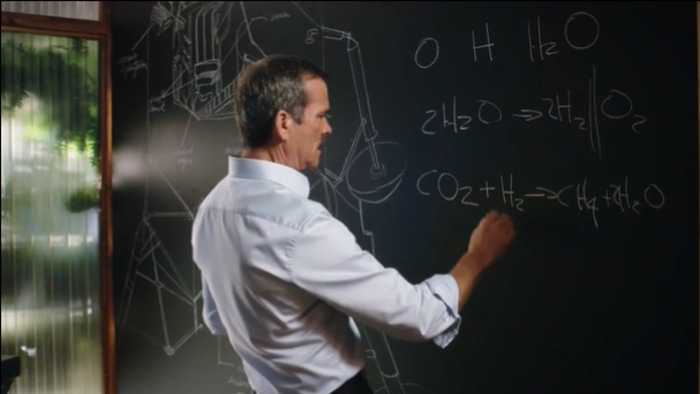
Exploring Mars, geology and astrobiology
“If we can just find one fossil on Mars, we know that there is life somewhere else, and therefore there’s life everywhere.”
In this last chapter, Hadfield explores the question of how the discovery that life is not unique to earth, might affect our assumptions and fundamental beliefs. It would be a great moment of introspection for humanity.
He moves on to explain how the first astronauts to spend time on Mars will need to train to be effective explorers – not just astronauts. Because everyone back on earth will be counting on them to have done their homework. Not just in physics and chemistry, but geology and astrobiology too.
These astronauts will be the emissaries of the world, and we’ll all be counting on them to know and to the right things.
No pressure there then!
Section 7/7: Concluding words and bonus chapter
“Exploration is our history. It’s the legacy that got us where we are. And it’s always been that way.”
As he bids us farewell Chris sets out where he thinks space exploration is likely to take us next.
In his bonus chapter, Hadfield shares his personal story and provides practical guidance for achieving your own goals. He shares his philosophy that life is not to be squandered and that no opportunity should be wasted.
To not do what you’re capable of, in Hadfield’s view, is to laugh in the face of the efforts of others who came before you and made things better. And he invites you to understand that:
“Every single step that you take in the direction of your dreams is one that will make you happier and more satisfied with yourself.”
What I liked about the Chris Hadfield MasterClass
Teaching from a world renowned astronaut and advocate for science
Hadfield’s experience, combined with his ability to communicate complex ideas is what’s given him such reach, with literally millions of followers on social media.
In the words of others who have taken his class:
“Chris did a great job of breaking down complex ideas without leaving me feeling like he ‘dumbed it down’.”
“His encyclopedic knowledge of all aspects of space and space flight is obvious, but his ability to humanize and share this information is spot on.”
“Chris has a unique teaching style - he is a natural born educator. His props are well chosen, his voice is clear and animated, his metaphors/analogies are most appropriate, he has an exquisite choice of concise language and directly informative words that are to the point”
– Comments from the MasterClass Community
Learning supported with strong examples and props
The ability to use relatable and appropriate examples is a key communication skill.
Hadfield’s use of exemplary material throughout this MasterClass demonstrates this skill in action. Even complex ideas like orbital mechanics and theories of gravity are placed in a context that makes them accessible.
Understanding is supported even further with great use of film clips, stills, animations, scale models and props.
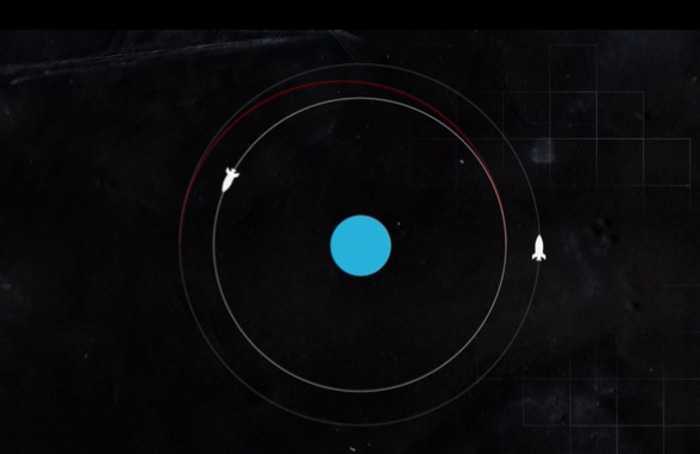
Well structured lessons that flow logically
The lessons flow and dovetail together well.
Knowledge is delivered in a way that promotes incremental understanding and progress.
In as much as a person can use the most effective teaching methods in a pre-recorded lesson, Hadfield does it all.
It's exciting, and it makes you think
Hadfield asks a number of probing questions for you to answer for yourself.
And he has a way of drawing you into his stories that definitely raised my heart rate on a few occasions!
What I think could be improved
More theory than practice
Perhaps inevitably given the subject material, this MasterClass was information heavy and, where there was a run of quite technical lessons, I had to take several breaks away from the screen.
Though there were probing questions to make you think, there was less in the way of actually how to apply your newly acquired way of thinking in everyday life.
Some lessons would benefit from more complementary footage
The ‘talking head’ lessons where Hadfield is explaining complex ideas would benefit from some more footage and stills to break up the presentation.
Who is the Chris Hadfield MasterClass for?
In my opinion this class would be a good fit for anyone who can tick one or more of the following boxes:
Anyone who is:
- Fascinated by space
- Keen to understand the science behind space travel
- Curious about how flying in space changes your perspective on earth
- Wanting to develop leadership and/or problem solving skills
- Interested in exactly what it takes to be an astronaut
- Intellectually curious
- A Chris Hadfield fan
In terms of existing knowledge. On a scale of 1-10 (where 1 is a non-specialist and 10 is an astrophysicist or astronaut already) I would rate this course as suitable for those who fall between 1-7.
The class is less suited to anyone already academically trained in the sciences. Hadfield is all about making science interesting and accessible to non-specialists. Therefore, you are unlikely to learn anything you don’t already know. That said, you’re sure to enjoy the ride!
How much does the Chris Hadfield MasterClass cost?
At the time of writing, an individual MasterClass subscription costs $120 a year ($10 a month).
With this, you have access to all 190+ MasterClasses.
The great thing about this is that the more classes you take, the less the effective cost per class is.
For example, if you find at least 4-6 classes you like, you’re effectively paying $20-$30 per course ($120 / 6 classes =$20).
You can save even more money by joining MasterClass with friends or family. Find out more here.
Bearing in mind these classes are taught by world experts, the value is unbeatable. It’s sort of a way to hack learning.
Also, MasterClass offers a 30 day refund if you’re not happy with your purchase.
Is there anything better than the Chris Hadfield MasterClass?
There are a number of Massive Open Online Courses from top universities taught by academics which are related to Space. You can try them for free. If you want certification, however, the cost ranges between $50-$300.
One example is The Conquest of Space: Space Exploration and Rocket Science (Universad Carlos III de Madrid) on EdX and a Brief History of Human Spaceflight (University of Houston) on Coursera.
There are also a number of short, specific courses on Udemy such as Rocket Engineering and Interstellar Space Propulsion and Astronautics & Space Technology for Future Human Missions. The cost for these is currently between £40-£60.
These courses are not taught by experienced astronauts, do not cover the range and depth of the content in Hadfield’s MasterClass, and the production quality is not as professional.
And, of course, if you purchase the All Access Pass to MasterClass, you can take any or all of the 100+ courses available on the platform. The Chris Hadfield class would sit well alongside Neil de Grasse Tyson (Scientific thinking and communication), Paul Krugman (Economics), Bill Nye (Science and Problem Solving) or even Matthew Walker (the Science of Sleep).
Taking all this into consideration, and given Hadfield’s credentials, I would say his MasterClass represents the best value if you fit into the target audience.
The Chris Hadfield MasterClass: what others have said
Learnopoly always aims to present the most fair and balanced review of any MasterClass. So we spend time trawling the Internet for both good and bad reviews.
However, whilst researching this course on Reddit and similar forums, I found only positive reviews.
Many, like me, commented on how this class makes you feel:
You Tube
“I've taken this class, and this trailer is an excellent taste of what this class is and how it makes you feel. Sometimes I actually got choked up while watching. The topics, values, and mindset are profound and Chris Hadfield seems to be a world-class human being. I am so impressed.” (Comment from YouTube)
“You guys outdid yourself Masterclass! This class is too much fun!” (Comment from the MasterClass community)
Others emphasize the range and complexity of information covered and Hadfield’s ability to make it all so accessible:
“Absolutely blew my mind and had me completely captivated. I’m not writing this as an ad or anything, just out of pure awe for Chris and his teaching really. The man has a wealth of knowledge like no other, and somehow makes ridiculous concepts easy to absorb. For anyone lurking on the subscription I’d jump in, even if you only watch this series. TLDR: Chris is a man like no other, you will be captivated from the first minute.” (Comment from Reddit)
“Chris is a natural born educator. This is truly a remarkable and timely course. I am enrolled in other Master Classes - to date, no other course comes close to the quality and pedagogy of this one. Congratulations Chris!”
“This is not someone reading off a teleprompter or referring to notes. His encyclopedic knowledge of all aspects of space and space flight is obvious, but his ability to humanize and share this information is spot on. This gem of a human being is someone you would want to meet and spend time with, but if that doesn’t actually happen, these classes are the next best thing. If you read this Mr. Hadfield, thank you for this rare opportunity!” (Comments from the MasterClass Community)
Is the course content unique?
According to Hadfield, yes.
He and his wife were developing a similar course when MasterClass contacted them. So a perfect partnership between Hadfield and MasterClass was formed to help people learn more about space.
And this class is the result.
Hadfield has published his autobiography An Astronaut's Guide to Life on Earth: What Going to Space Taught Me About Ingenuity, Determination, and Being Prepared for Anything. There will undoubtedly be an overlap with the information in his MasterClass.
That said, this MasterClass delivers an experience that you just can’t get from the pages of a book. As this student found out:
“This is actually my first MasterClass. Chris Hadfield has been a big inspiration for me over the years. After reading his book, and going through countless hours of video on the internet, I knew it was only a matter of time until I got to buy his class, and I’m absolutely loving it so far.Thank you MasterClass, and thank you Chris Hadfield for this opportunity.” (Comment from the MasterClass Community)
Verdict: Is the Chris Hadfield MasterClass worth it?
It’s a yes from me.
Hadfield has two decades’ experience as an astronaut, has clocked up 4,000 hours in space, is a passionate advocate for science and a truly gifted communicator. What’s not to like?
I would say this course is suited to a wide range of people. Even if you’re already well versed in astrophysics, Hadfield provides great lessons on leadership and problem solving.
And this course excels at giving you a very personal perspective on how space travel transformed Hadfield’s life. And how it should transform yours.
And remember, you get even more value by combining Hadfield’s class with others. Neil de Grasse Tyson and Paul Krugman would sit well with this one.
Plus, MasterClass has a 30 day refund policy so you’re covered in the unlikely event that you aren’t impressed.
Frequently asked questions
A MasterClass all-access-pass costs $120 a year ($10 a month). This gives you access to all 200+ courses (and their resources) for 12 months.
The Chris Hadfield MasterClass is 7 hours and 41 minutes long and consists of 29 videos which are, on average 15-20 minutes long.
Unfortunately you cannot get the Chris Hadfield MasterClass for free. But MasterClass has a range of purchasing options and offers refunds if you’re not happy.
Yes, MasterClass operates a 30 day refund policy if you purchase directly through them. If you purchase through other providers, their returns policy may apply.

Liz Hurley has 30+ years of high school teaching experience and is one of our senior writers here at Learnopoly.


There is visibly a bunch to identify about this. I suppose you made various nice points in features also.
Thank you! 😊 I appreciate your thoughtful feedback. I’m glad you found the points valuable. Stay tuned for more insights!
Good info. Lucky me I reach on your website by accident, I bookmarked it.
Thank you! Sometimes the best discoveries happen by accident. 😊 I’m glad you found the site and bookmarked it—hope you enjoy more content in the future!
Thank you! I’m glad you stumbled upon the site and found the info useful. I appreciate the bookmark—hope you enjoy more content when you visit again!
I conceive this web site has got very superb written subject material articles.
Thank you so much! I truly appreciate your kind words and support. I’m glad you find the content valuable. Hope you continue to enjoy it!
I just couldn’t depart your site before suggesting that I really enjoyed the standard information a person provide for your visitors? Is going to be back often to check up on new posts
Thank you so much! I’m really glad you’re enjoying the content. You’re always welcome back—looking forward to sharing more valuable posts with you! 😊